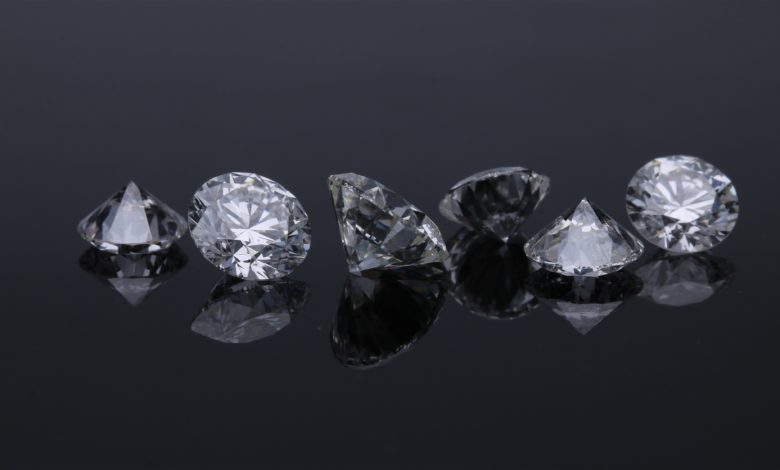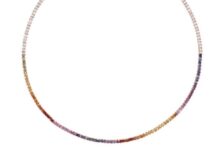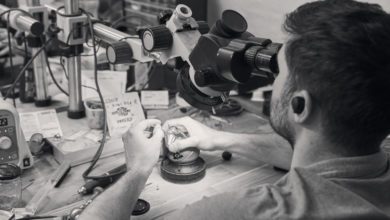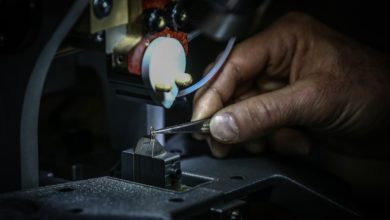Spot the difference: lab-grown vs. mined diamonds
By Madeléne Holmstroem, diamonds expert at Sacet

When we think of diamonds, it’s rarely in a negative light. Their beauty is infamously captivating, making them the most popular gemstone used in jewellery, and distracting us of their darker past.
The lifetime of a diamond isn’t quite as beautiful as the end result. Pertaining to their label of ‘natural’ diamonds, they are traditionally extracted from the earth, absorbing a massive amount of energy for even a single carat. They are born under immense pressure, made up of gases carbon, nitrogen and sometimes boron.
Below, the article outlines the pros of investing in lab-grown diamonds rather than their ‘natural’ alternative.
The problems that can be faced with mined diamonds
When something is as coveted as a diamond, people don’t often look past face value. However, when delving a little deeper into the story behind a mined diamond, some worrying realities are unearthed.
Firstly, the trading of mined diamonds can be totally unethical if the right source is not used. ‘Blood diamonds’ are stones outside of regulated forces control, rather traded by ‘rebels’, often illegally. Ethical global sourcing is still a challenge, as the United Nations Kimberley certification scheme has, so far, failed to put a halt to the trading of blood diamonds. The profit is often used for evil – known to have financed arms or other weapons to fund their cause, often involving war or terrorism.
The process of diamond mining has also been known to disrupt animal habitats, posing a huge threat to biodiversity and forests.
Additionally to the impact on beings, mined diamonds put a great strain on the planet. They require an astonishing amount of energy and extraction to produce even a single carat: approximately 250 tonnes of earth. Due to the sheer volume of said extraction, the damage done is commonly irreversible – leaving gaping holes in the Earth that can be seen from as far as Space. These gaps can lead to bigger problems, too, like erosion or sinkholes.
How are lab-grown diamonds different… and how are they the same?
At their core, lab-grown diamonds are extremely controlled objects. They are far easier to monitor and regulate due to the nature of their creation and distribution.
Where one is manually extracted from the earth, a process accessible and able to fall under the wrong control, the other is engineered by experts in a specialist laboratory.
The process of creating lab-grown diamonds has been meticulously curated over time, taking into account all the elements of mining diamonds that can be improved, like the environmental impact. For example, the water consumption of mining natural diamonds is huge – around 126 gallons of water are needed for every 1-carat earth-mined diamond – unlike the 18.5 litres needed to create a 1-carat lab-grown gem. Obviously, there is still a long way to go to make them completely environmentally sound, but there is scope for this change in lab-grown diamonds, where there may not be in the mining world.
Physically, there are very few differences between the two. Lab-grown replicate the original stone, so the only cosmetic disparities between them may be natural, individual defects in a mined diamond, like when boron finds its way into their makeup, which gives some diamonds a cool blue tint. Even in this case, only specialist equipment will be able to find these discrepancies, rather than the naked eye.
There is more of a capacity for sustainability to prevail in lab-grown diamonds, too. Although there is potential for further regulations and protections of mining diamonds, the product will always be finite, rare, and energy-consuming. Lab-grown diamonds don’t have these limitations, and with technological advancement in the industry, they will likely keep moving onwards and upwards.
The lifetime of a lab-created diamond
These gems are created in a man-made environment designed to replicate the natural birth of a mined diamond, just without causing the earth and its environment as much stress.
The cutting edge technology is used by highly trained engineers and scientists. CVD, or Chemical Vapor Deposition, is the preferred process of creating this type of diamond. The process is the most cost-effective, energy-efficient and least time consuming, rather than its alternative, HPHT (High Pressure, High Temperature) which is still used, but less well regarded.
In CVD, a ‘seed’ diamond is placed inside a chamber and put under an extremely high temperature (usually over 800 degrees celsius). The chamber is filled with an ionised, carbon-rich gas that molecularly attaches to the diamond seed. Over time, the carbon builds and bonds with the seed, resulting in the diamond expanding and becoming the end product.
So, why go lab-grown?
To put it simply, the products are far cheaper and far more sustainable.
They can be around 30 percent cheaper than the original stone due to the far less restrictive and finite nature of how they’re made. The diamonds are just as real, despite common myths that they’re a fake alternative to the original diamonds we know and love. But, this is untrue – they’re just diamonds that are made through pioneering modern technology, as opposed to the traditional earth extraction.
By Madeléne Holmstroem, diamonds expert at Sacet













